Japanese short-grain rice is a Japonica rice cultivar with a unique stickiness and delightful fluffy texture. It’s the staple food for the Japanese.
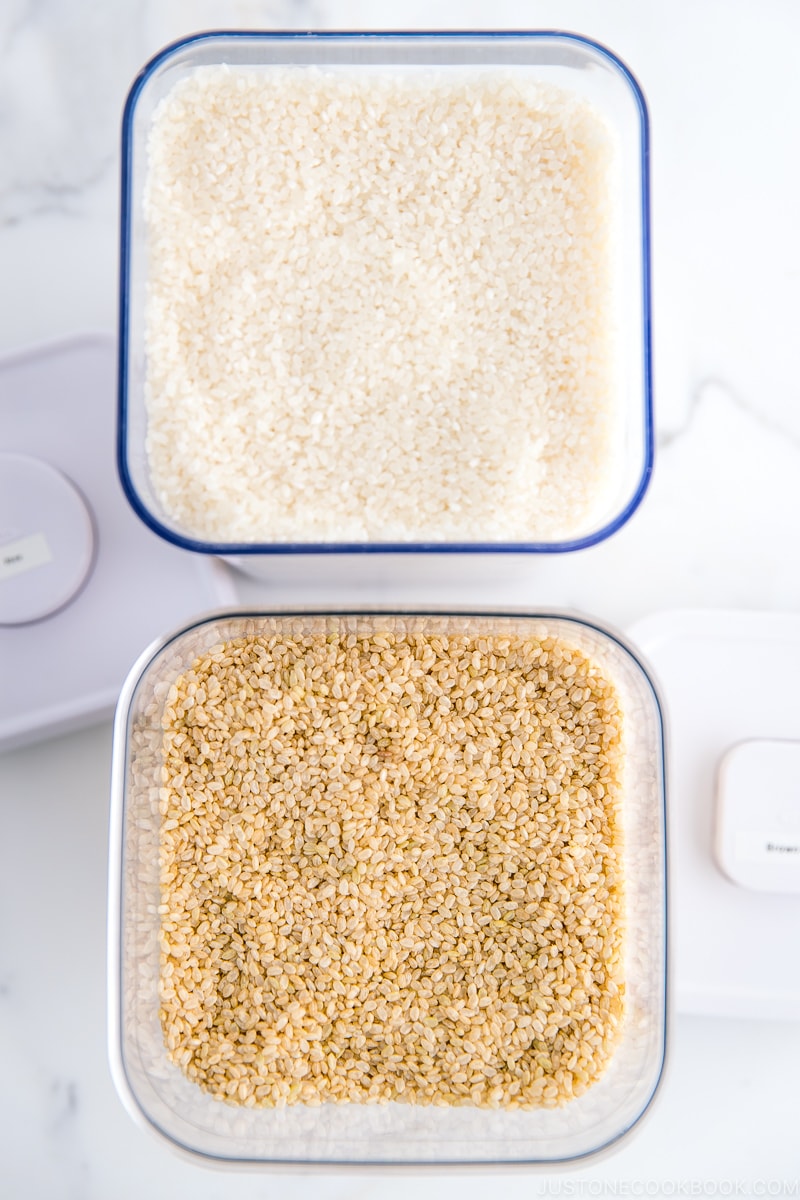
Japanese short-grain rice (Uruchimai 粳米) refers to a short-grain Japonica rice cultivar characterized by its unique stickiness and texture. The kernels are plump and short in length. They also contain more moisture and are sticker than other types. The Japanese eat it as brown rice, called genmai (玄米), and polished white rice.
Table of contents
What Is Japanese Short Grain Rice
Cultivated for thousands of years, Japanese rice is the quintessential staple food of the Japanese diet. Most people outside of Japan may be familiar with Japanese rice used for sushi and rice balls.
However, Japanese rice is commonly consumed as plain rice (Gohan ご飯) as part of Ichiju Sansai, a typical Japanese meal, or packed in a bento lunchbox. It is sometimes cooked with seasonal vegetables, seafood, or meat and seasoned with dashi and soy sauce. This seasoned rice dish is called takikomi gohan or maze gohan.
Some rice products, such as sake, shochu, rice vinegar, and shio koji are made with Japanese rice.
However, this is not to be confused with Japanese glutinous rice or mochigome, another short-grain japonica rice cultivar. With a much more sticky texture, mochigome is used for mochi, traditional Wagashi like sekihan and daifuku, and snacks like rice crackers.
What is Sushi Rice
You may see ‘sushi rice’ labeled Japanese short-grain rice outside Japan.
This is confusing as “sushi rice“ in Japanese refers to Sumeshi (vinegared rice 酢飯) to make sushi. Sumeshi, or vinegared rice, is made with cooked Japanese short-grain rice and seasoned with a rice vinegar mixture. However, the Japanese do not eat sushi rice for regular meals.
‘Sushi rice’ outside of Japan is another name for Japanese short-grain rice. You can cook it for regular eating or use it for sushi rolls.
Varieties of Japanese Rice
When it comes to taste, there’s a wide variety. The most common types are Koshihikari (コシヒカリ), Akitakomachi (秋田こまち), and Sasanishiki (ササニシキ). Koshikikari is a highly regarded and preferred rice cultivated in Japan. It’s also one of the most expensive.
If price is your concern, look for domestic varieties. In the US, there’s lots of quality short-grain California rice.
How To Choose The Best
When buying Japanese rice, there are a few things to consider: freshness, sweetness, texture, stickiness, flavor, and origin.
First, look out for shinmai (新米). Literally, ‘new rice,’ shinmai is the first crop of the season. Serve plain or for onigiri rice balls.
When you visit a Japanese grocery store, you can ask for their recommendation and if the rice is shinmai. Sometimes, the labels on the rice bags also indicate if it’s a ‘new crop’ or 新米.
If you can’t find shinmai, check the harvest year and check that the rice isn’t old.
Japanese Short Grain Rice That I’ve Tried and Love
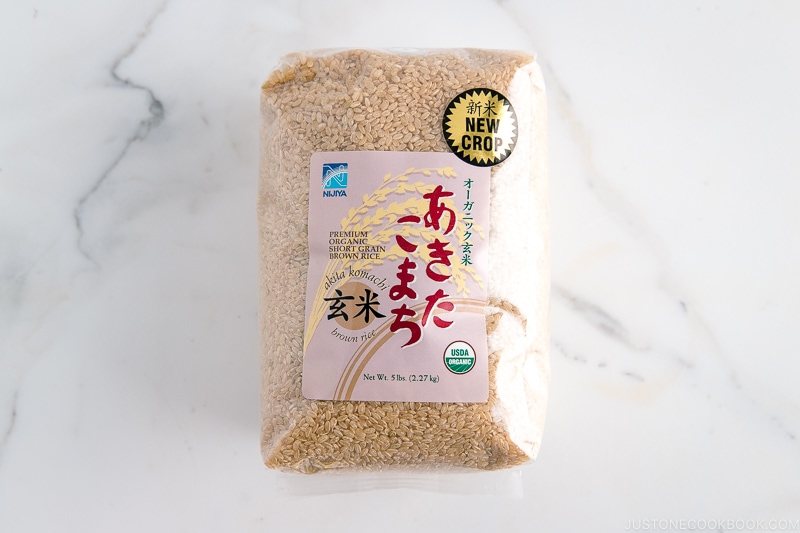
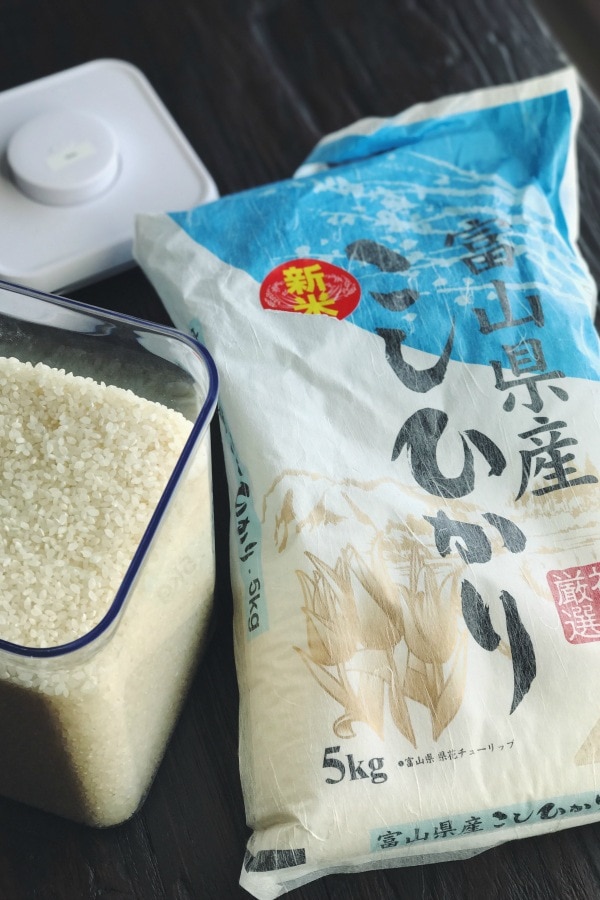
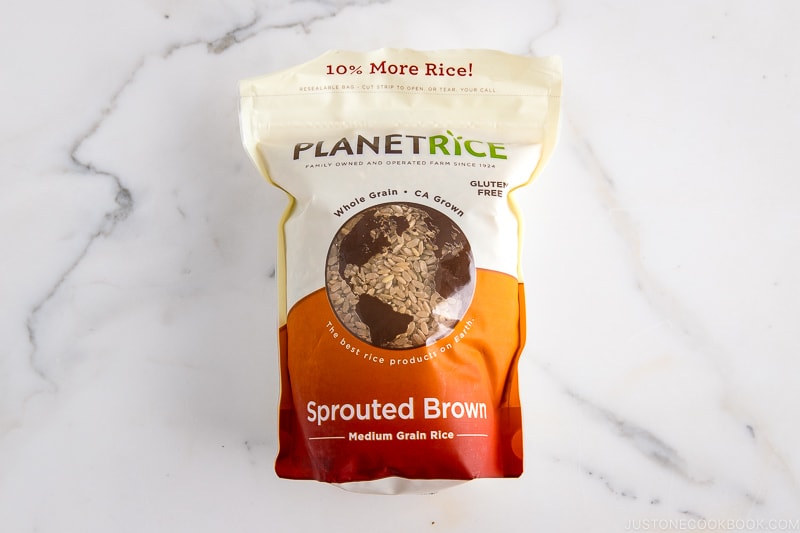
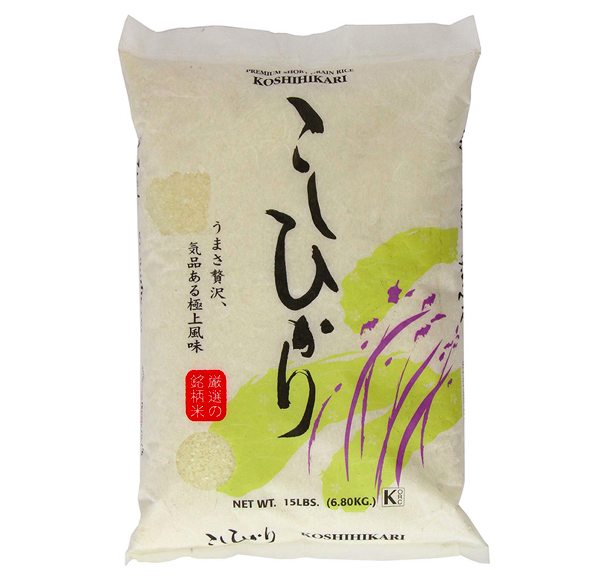
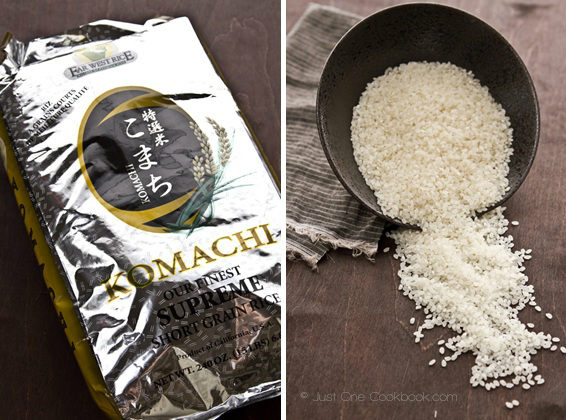
I love Komachi, the California Supreme Short Grain Rice from Far West Rice. You can read more about why I love this rice here. You can purchase Komachi on Amazon.
Other Commonly Available Brands
If you couldn’t find the above-recommended Japanese premium short-grain rice brands, some standard brands are widely available in your local Asian or major grocery stores. Kokuho Rose, Nishiki, and Calrose are Californian grown medium-grain rice. You can find them at most grocery stores that you can buy in most places, and they are usually cheaper.
Calrose rice was developed around the 1950s in California by Japanese-American producers. Although it is not considered authentic Japanese rice, Calrose is a medium-grain Japonica used by many Japanese-American restaurants.
If freshness and flavor matter, look for Tamaki Gold and Tamanishiki Super Premium Short Grain Rice at local Asian grocery stores. Tamaki Gold is California-grown Koshikikari, while Tamanishiki is California-grown short-grain rice that uses two kinds of premium short-grain rice – Koshikikari and Yuma Gokochi. They are more expensive than Kokuho Rose and Nishiki.
How To Store
To preserve the moisture and the freshness, buy the size you can finish within a month or so. Store rice in a tightly sealed container away from direct sunlight, heat, or humidity.
I use Oxo airtight containers for storing rice. I fill up the container and leave the remaining rice in the bag. Seal the bag tightly with tape to keep the rice as fresh as possible. When the container is empty, refill it from the bag.
Freeze leftover rice wrapped in plastic wrap or pack it in containers. Microwave to reheat.
How To Cook
The most crucial step in cooking rice is soaking the grains for 20-30 minutes after rinsing. This will ensure fluffy grains of rice. You can cook the rice in a rice cooker, pot, InstantPot, or donabe. Make sure to measure the rice and water in a rice cup correctly. The general ratio is 1.2 cups of water for every 1 cup of rice.
Once cooked, gently fluff the rice with a rice paddle in a folding and sideways cutting motion. Avoid mashing or aggressively handling the rice.
Rice Cooker Method
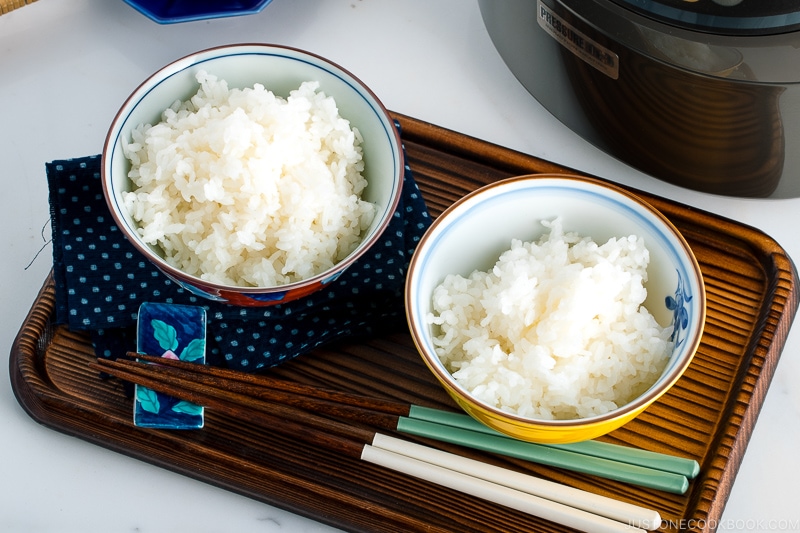
Stovetop Method
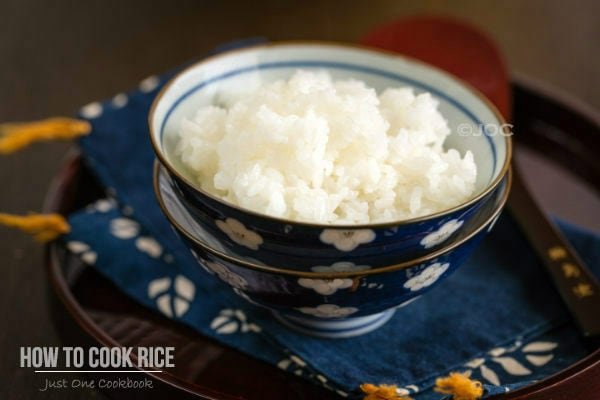
How To Make Sushi Rice
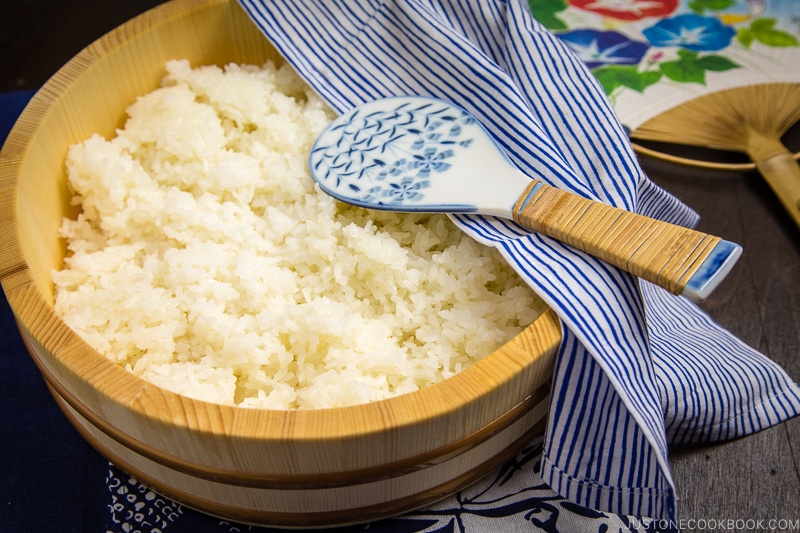
How To Store Cooked Rice
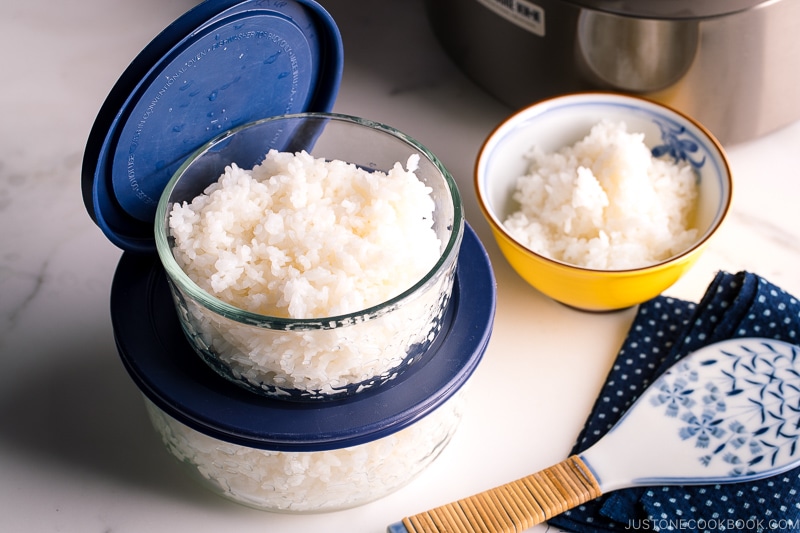
Substitutes
Some people recommend substituting Japanese rice for arborio rice (AKA risotto rice), Italian short-grain rice, due to its similar sticky character. However, it has a chewy texture without a sticky consistency, so I don’t recommend it. Pudding rice from the UK is a short-grain rice cultivar used to make rice pudding, but it is extremely sticky and thus may not be suitable for regular eating.
If you have a Korean grocery store nearby, choose Korean rice, a similar short-grain rice.
Long grain rice such as Jasmine rice, Bomba rice, or basmati rice will not pair well with Japanese meals as it doesn’t contain enough moisture, and the rice does not stick together.
Other grains, such as couscous, quinoa, and cauliflower rice, may be suitable for those looking for a low-calorie and high-fiber substitution, but please note that it’s not what the Japanese consume daily.
Wish to learn more about Japanese cooking? Sign up for our free newsletter to receive cooking tips & recipe updates! And stay in touch with me on Facebook, Pinterest, YouTube, and Instagram.



